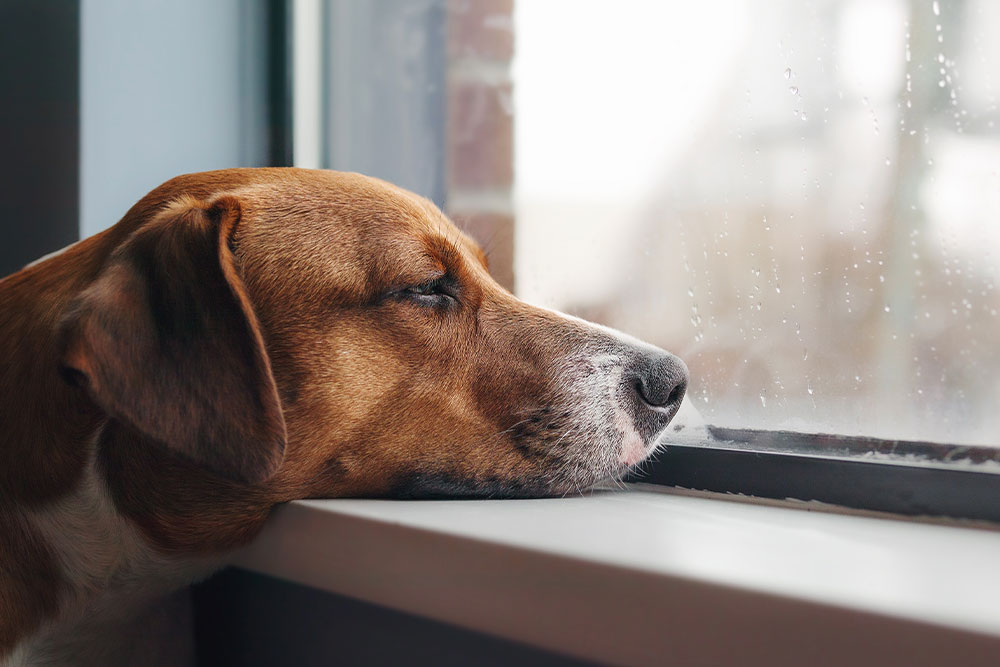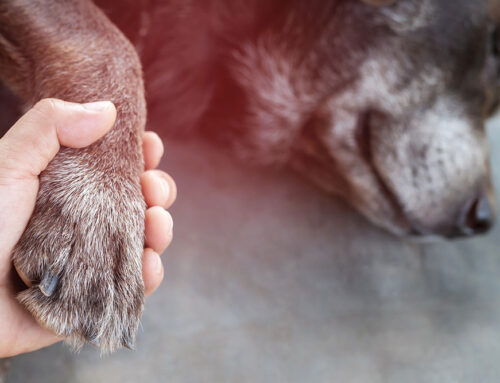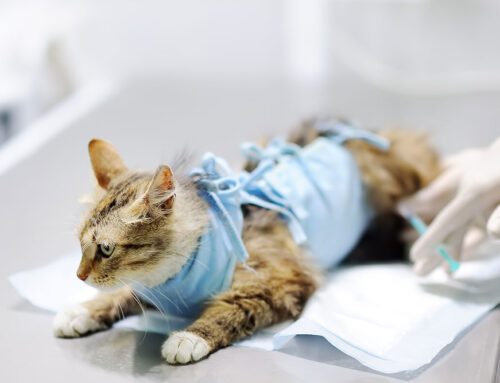Separation anxiety is one of the most common behavioral issues in pets—and one of the most misunderstood. Dogs and cats with separation anxiety experience intense stress when left alone, often leading to destructive behaviors, house soiling, self-injury, and emotional distress for both pet and owner.
At Creature Comforts Veterinary Service, we help families navigate this issue with personalized training strategies, behavior consultations, and when necessary, medical support. With time and the right tools, anxious pets can learn to feel safe and secure, even when home alone.
What Is Separation Anxiety?
Separation anxiety occurs when a pet has an exaggerated response to being left alone. It’s more than just mild boredom—these pets panic. Anxiety often begins within minutes of departure and worsens with time.
Common triggers include:
- Change in schedule (e.g., returning to work)
- Moving homes or adopting a new pet
- Loss of a family member or companion animal
- Traumatic experiences (e.g., time in a shelter or boarding)
Learn more: Separation Anxiety in Dogs – ASPCA
Signs of Separation Anxiety
In Dogs
- Pacing, whining, barking, or howling shortly after departure
- Chewing, digging, or scratching at doors or windows
- House soiling despite being housetrained
- Escape attempts that lead to injury (e.g., broken teeth, torn nails)
- Drooling, panting, or excessive salivation
In Cats
- Inappropriate urination/defecation outside the litter box
- Excessive grooming, bald spots, or skin lesions
- Increased vocalization (meowing, yowling) when alone
- Destructive scratching or knocking over objects
- Clinginess before departure
For a deeper dive into feline behavior:
Ohio State Indoor Pet Initiative – Feline Environment & Behavior
Why It Happens: Root Causes
1. Lack of Early Socialization
Kittens or puppies that weren’t gradually exposed to alone time may become overly dependent.
Read: AVMA Socialization Guidelines
2. Routine Disruption
Even minor changes—like a shift in work hours—can trigger anxiety in pets who thrive on predictability.
3. Breed Predispositions and Genetics
Some breeds are genetically prone to anxiety, especially high-energy or working breeds (e.g., Border Collies, Vizslas, German Shepherds).
4. Underlying Medical Conditions
Urinary tract infections, GI disorders, or pain can cause behaviors that mimic separation anxiety. A vet exam is essential to rule out medical causes first.
More on Preventive Behavioral Care – AVSAB
How to Help: Behavior Modification & Environmental Support
Desensitization Training
This is the foundation of anxiety treatment.
- Start with very short absences (seconds to minutes) and gradually increase.
- Use “false departures” (pick up keys, walk to door, then stay).
- Pair departures with low-stakes rewards: frozen Kong, puzzle feeder, or chew toy.
Avoid dramatic goodbyes or greetings—this fuels anxiety. Calm, quiet comings and goings are best.
More: Don’t Go! Separation Anxiety in Pets – AAHA
Counterconditioning: Change the Association
- Give a high-value treat only when you leave.
- Use a pet camera or timed feeders to deliver stimulation while away.
- Rotate toys to prevent boredom and predictability.
Enrichment & Exercise
Mental stimulation is just as important as physical.
Daily outlets include:
- Food puzzles and slow feeders
- Scent games and scavenger hunts
- Walks, playtime, and training before departures
- Window perches or bird feeders for cats
- Cat furniture or wall shelves to create vertical space
DIY Enrichment Toys for Your Cat – AAHA
DIY Cognitive Dog Toys – AKC
Dog Enrichment Ideas – Guide Dogs UK
When Home Strategies Aren’t Enough: Veterinary Support
When to Seek Help
- If your pet is injuring themselves
- If they panic the moment you leave
- If behavior is worsening despite training
- If they cannot settle for the entire time you’re gone
At Creature Comforts Veterinary Service, we offer:
- Behavior consults
- Ruling out medical causes
- Customized treatment plans
- Medication guidance
Medications & Supplements
Medications aren’t “a last resort”—they’re a useful tool to reduce distress so training is more effective.
Common treatments may include:
- SSRIs (e.g., fluoxetine)
- Anxiolytics for situational use (e.g., alprazolam)
- Natural supplements (L-theanine, Zylkene, pheromone diffusers)
- Prescription diets for anxiety
We always tailor medication plans to your pet’s health, age, and response to training.

Preventing Separation Anxiety in Puppies & Kittens
Start Young
- Introduce short, positive absences as early as 8–10 weeks old
- Use crates, pens, or designated spaces to build independence
- Don’t reward clinginess; instead, reward calm independence
- Provide fun enrichment even when you’re home
Preventive Behavioral Care – AVSAB
You’re Not Alone—And Neither Is Your Pet
With early intervention and support, separation anxiety is manageable. Your pet isn’t being stubborn—they’re scared. And they’re relying on you to help them feel safe.
If you’re struggling with your pet’s anxiety, we’re here to help—whether it’s creating a training plan, prescribing medications, or ruling out medical issues.
Contact Creature Comforts Veterinary Service Today
Let’s give your pet the confidence to thrive, even when you’re away.







Leave A Comment